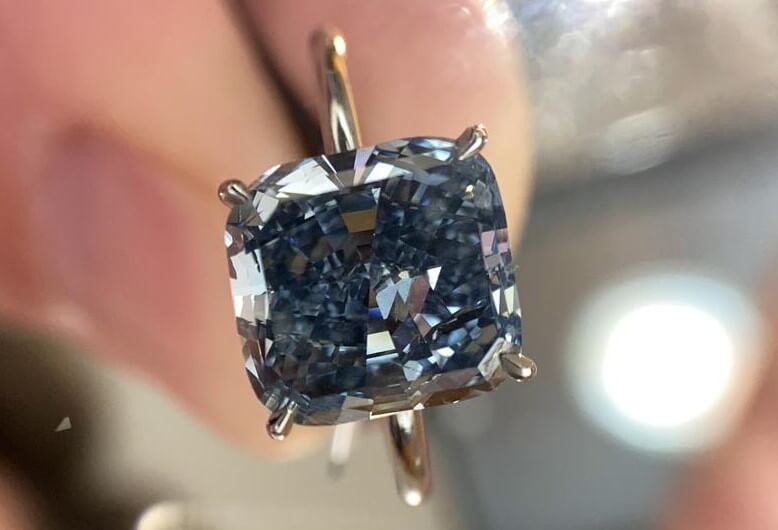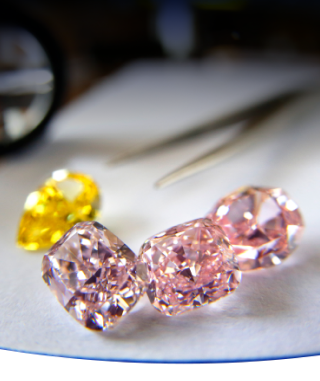Pre-Auction Analysis: Sotheby’s, Geneva: Magnificent Jewels and Noble Jewels, November 13, 2019
Our Sotheby’s Geneva Pre-Auction Analysis focuses on elements that are hidden from the unprofessional eye. We will describe the important visual elements for those who cannot attend the preview and discuss characteristics such as: Undertone, Color Dispersion, and Inner-Grade (UDI; a detailed explanation appears at the bottom of this article). When we analyze and grade any Fancy Color Diamond it is always done in relation to its GIA grade.
We use grades 1, 2, 3, and 4, 1 being the lowest grade. Grade + is granted in rare cases and stands for stones with an exceptional characteristic. Stones that receive a minimum total UDI score of 8, without a red remark, are considered to be “Gems” and are generally sought after by high-end jewelry brands, collectors and the investment community.
For your convenience, we have added direct links for the GIA reports.
- All images in this article review were taken with an iPhone 11pro, no filters were applied.
- All auction valuations are per carat and in US Dollars.
Lot # 413
3.03 carat Fancy Vivid Blue, Radiant cut, SI1. High catalogue estimation: $1,563,487 pc
Didn’t reach the minimum
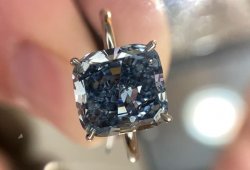
A vivid blue cushion cut with a low depth percentage of 54%, complementing its look in relation to the carat weight. It seems like great efforts were made to yield a 3 carat diamond from the rough. The consequences of this motivation resulted an unpleasant color dispersion in the form of a colorless bow tie in the center, and left eye visible inclusions. The inner grade is solid and has no gray undertone, exhibiting an absolute blue hue. The SI1 clarity is based on a large assemblage of black and white crystals next to the girdle and a large feather on the bottom.
Inner-Grade |
Color Dispersion |
Undertone |
Quality Remark |
3 |
3 |
4 |
SI2- Clarity eye visible |
Prevalence: Enters the market every 3 to 7 years
Total Visual Score: 10 out of 12- quality remark
To review the GIA Report Click here -> 1152876286
Lot # 405
6.03 carat Fancy Intense Purple-Pink, Pear shape, VVS2, Type IIa. High catalogue estimation: $585,045 pc
Price realized: $ 556,389 pc
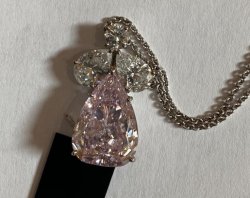
A relatively large fancy intense purple-pink pear shape, with an unconventional outline at the wider end of the shape. As the bottom area has a very thick girdle, this deformation was probably created out of a need to polish an inclusion from this part of the diamond. The stone has a considerable amount of graining which affects its overall luster (a typical attribute in Type IIa pink diamonds). The inner-Grade is relatively weak, however the undertone is attractive, exhibiting a “sweet” undertone due to the purple modifier.
Inner-Grade |
Color Dispersion |
Undertone |
Quality Remark |
2 |
3 |
4 |
Odd outline |
Prevalence: Enters the market every 2 to 3 years
Total Visual Score: 9 out of 12
To review the GIA Report Click here -> 2195207712
Lot # 398
1.16 carat Fancy Deep Blue, Cushion cut, VS1. High catalogue estimation: $1,042,707 pc
Didn’t reach the minimum
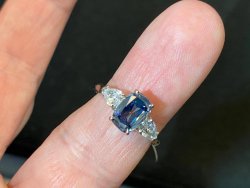
An elongated, old-cut style cushion shape diamond. The color in this case will probably meet the color expectations of most people who look for a Deep Blue diamond. The stone has no gray undertone and exhibits an absolute deep blue color (in professional jargon; Ink Blue). Due to the old style of the cut, the color dispersion is low with numerous colorless areas.
Inner-Grade |
Color Dispersion |
Undertone |
Quality Remark |
4 |
2 |
4 |
Total Visual Score: 10 out of 12
To review the GIA Report Click here -> 5181126549
Lot # 390
30.39 carat Fancy Intense Yellow, Round cut, VS1. High catalogue estimation: $26,533 pc
Price realized: $26,600 pc
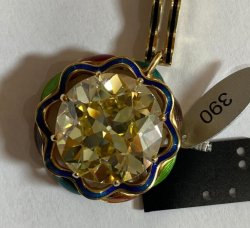
A highly saturated yellow old european diamond with old fashion facet alignment. The Inner-Grade is very strong, bordering to a vivid yellow. Due to its cut, the color visibility does not reach the full potential. No green or brown undertone is noticeable in the hue.
Inner-Grade |
Color Dispersion |
Undertone |
Quality Remark |
4 |
2 |
3 |
|
Total Visual Score: 9 out of 12
To review the GIA Report Click here -> 2205208451
Lot # 419
51.15 carat Fancy Yellow, Old mine brilliant-cut, SI1. High catalog estimation: $19,705 pc
Didn’t reach the minimum
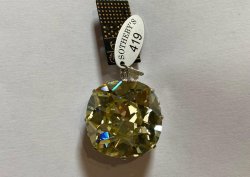
A very large old-mine cushion cut. The inner-grade is quite high but it is hard to experience it from the face up view of the diamond, due to the old-style facet alignment. Re-cutting this diamond to a modern cushion will probably result in a higher saturation grade. The SI1 clarity is situated underneath the table and is visible to the naked eye.
Inner-Grade |
Color Dispersion |
Undertone |
Quality Remark |
3 |
1 |
3 |
Clarity is eye visible |
Total Visual Score: 7 out of 12
To review the GIA Report Click here -> 6203517746
Lot # 392
9.22 carat Fancy Vivid Yellow, Step-cut, IF. High catalogue estimation: $71,059 pc
Price realized: $57,430 pc
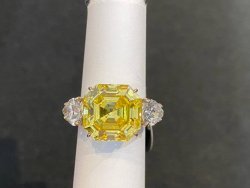
A square emerald cut with a very strong inner-grade and with no undertone exhibits an absolute yellow hue. The color dispersion is above average, resulting minor areas of colorless patches.
Inner-Grade |
Color Dispersion |
Undertone |
Quality Remark |
4 |
3 |
4 |
– |
Total Visual Score: 11 out of 12
Prevalence: 3-5 new similar diamonds enter the market per year
The GIA Report – 62044885512 (N/A online)
General
We use 1, 2, 3, 4, and 4+ to grade the three visual elements that GIA is silent about, however they impact the value dramatically.
Inner-Grade refers to the strength of color within each GIA saturation category:
Grade 1 weakest, bordering the saturation below.
Grade 2 weak (most abounded).
Grade 3 full-bodied color (above average).
Grade 4 very strong saturation.
Grade 4+ applies for the vivid category only, exhibiting the strongest possible saturation (rarely seen).
Undertone refers to a subtle hue influence in the body color of the stone.
For example:
A Fancy Blue Diamond with a significant gray presence in its general appearance will be graded with a low undertone grade of 1. A Fancy Blue that has no gray influence and will be close to a primary blue will receive the grade, 4.
In a Pink Fancy Color Diamond, a stone with a warm undertone (such as orange or brown) will receive a low undertone grade. A pink stone with a cold undertone (such as purple) will receive a high grade.
In Yellow Fancy Color Diamonds, low foreign influence or a light orange influence will grant the stone a high undertone grade. When the yellow undertone looks like a true primary yellow, it will receive the rare grade 4+. Green and brown undertones will grant a low grade in the yellow category.
Color Dispersion relates to how well the color is dispersed in the face-up view of a Fancy Color Diamond, regardless to whether the GIA grades the stone as even. A stone with many colorless areas will receive the grade 1, while a stone that exhibits its face-up view with no colorless patches will receive the grade 4+. Unlike the first two elements, the color dispersion is not a gemological quality and has only to do with cutter proficiency.
